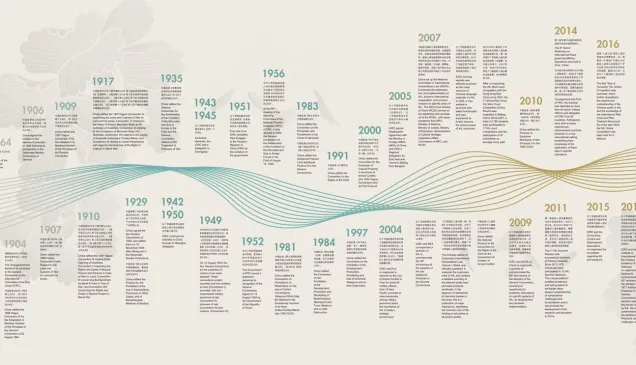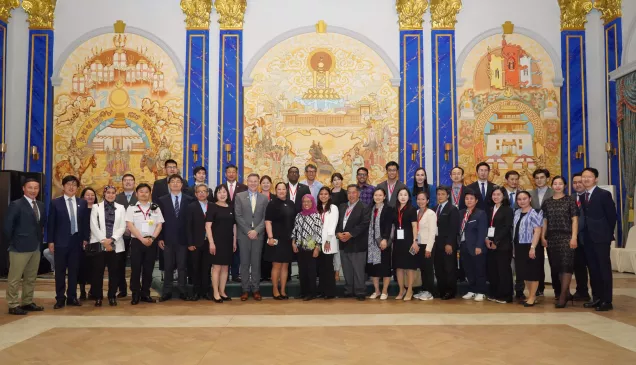Colombia: Anatomy of a lockdown
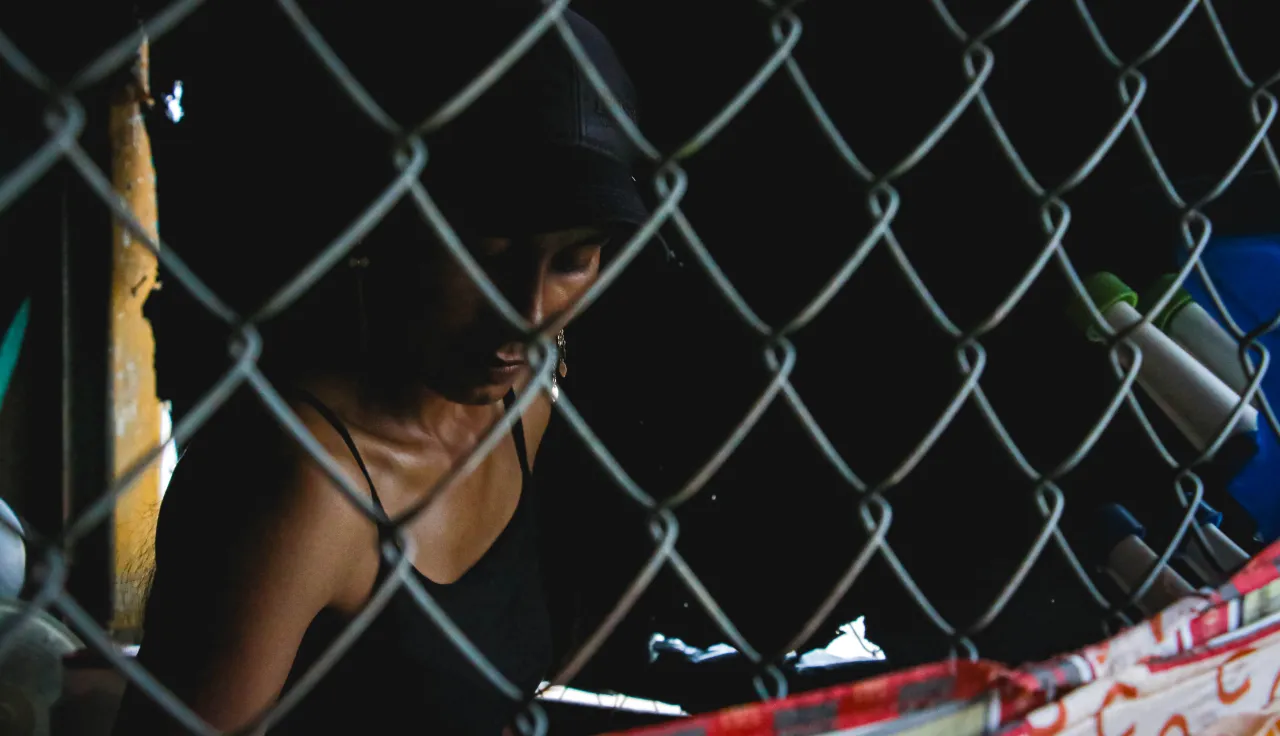
For more than two months, an eerie silence enveloped the banks of the mighty Caquetá River, where the greenery of the jungle meets the flowing waters and indigenous and farming communities live in harmony with nature. Suddenly, in mid-January, the everyday sounds of rural living were replaced by a stifling climate of uncertainty and fear.
People in these communities say that their rivers flow like life itself, never stopping. But during lockdown, even the Caquetá seemed to stand still, ensnaring in its watery grasp those who would, in normal times, be constantly on the move.
The message announcing the lockdown order gradually made its way through to the communities of the remotest reservations, with many only finding out about the movement restrictions on the eve of their enforcement.
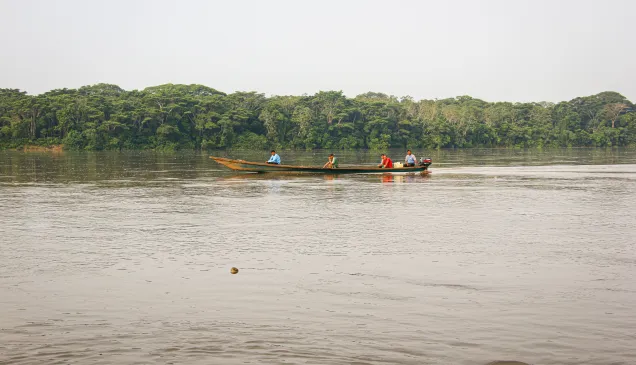
Communities along the Caquetá River live off artisanal fishing
Before the movement restrictions imposed in January 2024, farming and indigenous communities in 29 villages in Putumayo and 14 in Caquetá produced and sold cheese, carried out traditional fishing activities and collected fruit for their own needs, while others sold supplies in small shops and supermarkets. But when lockdown came, all crop and livestock production came to a halt, businesses closed, children could not go to class and the motorboats disappeared from the river. People were confined to their homes with their family and only allowed to go out at permitted times.
The river became a silent border accentuating the passing of time and heightening the challenge of surviving on the scant supplies set aside by some, with no chance of the village doctor treating those who fell ill and the only certainty that of heeding the rule of not being out after 6 pm.
Diana, a Huitora indigenous reservation leader, recalls how on Day 45 of lockdown they decided to go out for a walk with the younger ones to keep them amused, defying the confinement rules in an attempt to quell the restlessness that gripped them.
A big group of us from the community were in another village getting some exercise when they came and bullied us. Since that day, our families and our community have been living in fear. We also heard that after 6 pm, during lockdown hours, boats could not be used, which meant we had to stay put and eat what nature provided.
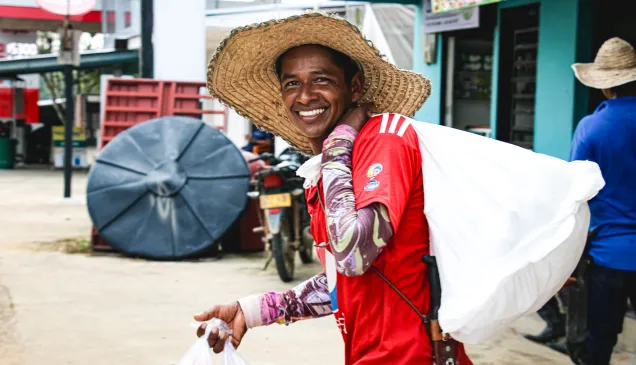
The ICRC delivered over 4,300 food parcels to people affected by the lockdown
Fear became a constant companion. Dufay, a woman from a farming community in the area, recounts that on another occasion, some women reopened their family restaurants out of desperation but had to close them again because members of armed groups were pointing the finger at them.
“If the armed groups fought between themselves, it wouldn’t matter so much, but it’s always people from farming communities they go after. It’s not our fault if someone comes and says ‘sell me a meal’. Just because they have weapons, they get to order people about and we are always on the receiving end.” Her voice is just one of many that tell of the difficulties experienced during the months of lockdown.
“There were times when mothers could not leave their community even if their children were ill, and we often needed Western medicine. That was really hard too,” observes María.
For many people in the areas most seriously affected by armed conflict, lockdown in practical terms meant putting life on hold. Families such as those of Diana, Dufay and María had to leave their children out of school that year because of the restrictions and compulsory social distancing.
“The lockdown started on 22 January, and my daughter was due to travel to Cartagena del Chairá the following day. When we called the motorboats to get her ticket, we were told that there was no service, that it had been suspended until further notice. That was when it all started. My daughter was already enrolled, and we were given a month for her to start classes, but as the lockdown lasted more than two months, when we called to say she could start, they said that the first term had finished and so my daughter ended up not being able to attend school at all that year,” explains Aleida.
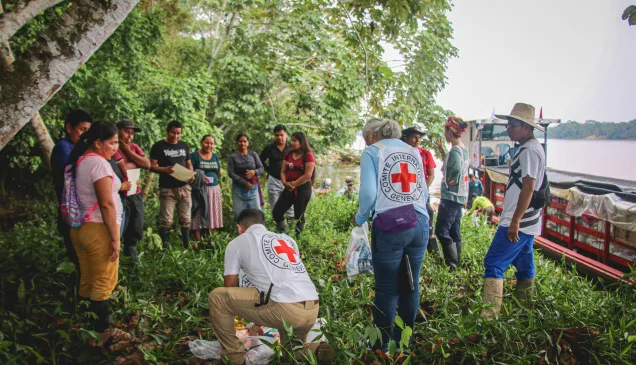
Koreguaje and Makaguaje indigenous people receiving the ICRC teams
While in some cities lockdown was a temporary measure to curb COVID-19 and the effects were tempered by technological solutions, in Caquetá, Putumayo and some other regions, it led to a daily struggle for survival, a time when life was reduced to essentials and each day brought new humanitarian consequences.
This all paints the picture of a lockdown that went beyond confinement within the walls of one’s home, that pierced the heart of these communities, testing not only their physical resistance but also their strength of spirit. In response, the multidisciplinary teams of the International Committee of the Red Cross (ICRC) strove to reach the areas most affected by armed conflict and alleviate the suffering caused by armed violence.

Children from the indigenous reservations turning out to meet the ICRC supply boat
“Communities and people are always at the centre of our work, and our first job is to listen to their concerns. It is a testament to their strength that these communities continue to find ways to cope and carry on in spite of the difficulties they face,” remarks Fausto Montagna, head of the ICRC subdelegation in Florencia.
When lockdown finally came to an end after more than 60 days of confinement, children went back to playing in the river, the smell of wet earth returned under farmers’ calloused hands and the Makaguaje and Koreguaje indigenous people resumed their daily rituals, signalling a return to the normal rhythm of life and demonstrating that communities, like rivers returning to their course and surging with renewed vigour, will always find the way to rise back up.

